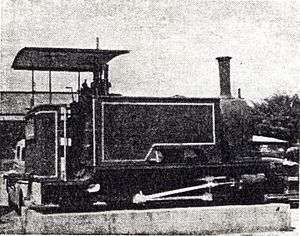1899 in South Africa
| 1899 in South Africa | ||
| 1896 1897 1898 « 1899 » 1900 1901 1902 | ||
|
| ||
Events
- April
- The Transvaal government orders Asiatics to move into Locations specified by the government before 1 July.
- May
- 4 – Cape Town based food packaging company Imperial Cold Storage and Supply Company is founded in London.[1]
- 5 – Sir Alfred Milner, High Commissioner of South Africa and Governor of the Cape of Good Hope, sends a telegram to Joseph Chamberlain urging him to intervene in the South African Republic.
- October
- 1 – Jan Gysbert Hugo Bosman, aka Bosman de Ravelli, a concert pianist and composer, leaves South Africa for London.
- 11 – The South African Republic declares war on Britain and launches the Second Boer War which will only end in 1902.
- 13 – The Siege of Mafeking begins.
- 14 – The Siege of Kimberley begins.
- 20 – In the Battle of Talana Hill, the first major clash of the conflict near Dundee, Natal, the British Army drives the Boers from a hilltop position, but with heavy casualties, including their Commanding General Sir Penn Symons.
- 30 – The Siege of Ladysmith begins.
Births
- 30 January – Max Theiler, a virologist and the first South African to receive a Nobel Prize, is born in Pretoria.
- 18 February – Aegidius Jean Blignaut, short story writer and creator of Hottentot Ruiter, is born in Kroonstad.
Deaths
- 6 June – Sir Henry Binns, sugar cane farmer, founder of the Umhlanga Valley Sugar Estate Company and Natal politician, dies in Pietermaritzburg at the age of 61.
Railways
Railway lines opened
- 31 January – Free State – Wolwehoek to Heilbron, 30 miles 61 chains (49.5 kilometres).[2]
- 12 April – Cape Central – Roodewal to Swellendam, 41 miles (66.0 kilometres).[2]
- 1 May – Transvaal – Potgietersrus to Pietersburg, 39 miles (62.8 kilometres).[2]
- 25 October – Natal – Pietermaritzburg to New Hanover, 29 miles 51 chains (47.7 kilometres).[2]
Locomotives
- The Natal Government Railways places the first of 101 Class C 4-10-2T Reid Tenwheeler locomotives in service. In 1912 they will be designated Class H on the South African Railways (SAR).[3]
- The New Cape Central Railway places its first Cape 7th Class 4-8-0 Mastodon type locomotive in service. In 1925 they will be designated Class 7E on the SAR.[3][4][5]
- The Walvis Bay Railway places a single 2-4-2 tank locomotive named Hope in service.[6][7]
- Rand Mines acquires two narrow gauge 0-4-0 tank steam locomotives from Avonside Engine Company.[3]
References
- ↑ Measuring Worth, Relative Value of a UK Pound Amount – average earnings, retrieved on 27 December 2010
- 1 2 3 4 Statement Showing, in Chronological Order, the Date of Opening and the Mileage of Each Section of Railway, Statement No. 19, p. 184, ref. no. 200954-13
- 1 2 3 Paxton, Leith; Bourne, David (1985). Locomotives of the South African Railways (1st ed.). Cape Town: Struik. pp. 31, 46–48, 114. ISBN 0869772112.
- ↑ Holland, D.F. (1971). Steam Locomotives of the South African Railways, Volume 1: 1859-1910 (1st ed.). Newton Abbott, Devon: David & Charles. p. 78. ISBN 978-0-7153-5382-0.
- ↑ Pattison, R.G. (1997). The Cape Seventh Class Locomotives (1st ed.). Kenilworth, Cape Town: The Railway History Group. pp. 10, 15. ISBN 0958400946.
- ↑ Espitalier, T.J.; Day, W.A.J. (1948). The Locomotive in South Africa - A Brief History of Railway Development. Chapter VII - South African Railways (Continued). South African Railways and Harbours Magazine, January 1948. p. 32.
- ↑ Dulez, Jean A. (2012). Railways of Southern Africa 150 Years (Commemorating One Hundred and Fifty Years of Railways on the Sub-Continent - Complete Motive Power Classifications and Famous Trains - 1860-2011) (1st ed.). Garden View, Johannesburg, South Africa: Vidrail Productions. p. 379. ISBN 9 780620 512282.
This article is issued from Wikipedia - version of the 10/19/2016. The text is available under the Creative Commons Attribution/Share Alike but additional terms may apply for the media files.

